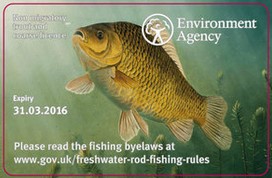
Float Fishing Crucian Carp
jump to Float Fishing Video Crucian Carp
To catch crucians regularly a very carefully shotted light float rig is imperative the best floats being a fine-tipped antenna or a short narrow-diameter length of peacock quill fished in ‘mini-lift’ style. The object is to see those tiny bites for which crucians are renowned and which often barely register on the float tip (fig. 9B).
For this reason the single shot (a No. 1 BB or AA depending on float size) should be not more than 2 in from the hook. Try moving it even closer to 1 in away because sometimes this alone can make all the difference between seeing bites or not. The secret after casting in and tightening up so the float cocks is to wind down even further so the tip is just the merest ‘blimp’ on the surface. Strike the slightest movement.
When crucians are really feeding confidently denoted by clusters of small bubbles regularly rising to the surface the float might even lift completely out of the water and lie flat as the carp tills its head up after sucking up the bait and dislodges the shot. Or the tip will sink positively as the crucian characteristically runs along the bottom. Many more bites will barely register on the float so you need 10 hold the rod throughout and be eagle-eyed.
To stand a better chance of hilling bites from crafty crucians that just lie on the bottom blowing the bait in and out rig up a light antenna float with a dust shot 2-3 in from the hook with the bulk.
shot set at mid depth {fig. 9A). After carefully plumbing the swim adjust the float so the bait is literally a fraction above the bottom. As with the lift rig strike at the slightest movement on the float tip. Remember to keep loose feed or small balls of groundbait going in on the little-and-often principle and they might be encouraged lo feed all day. A ruse always worth trying when they are particularly dour is to gently wind the float in 6 in at a time which makes the bait lift upwards enticingly and fall gently down to the bottom again. Baits which are inherently buoyant like bread flake or csters or which are expected to move as worms work best when ‘twitching’ in this way to encourage bites.
Incidentally both these rigs work effectively for tench that are biting particularly shyly.






